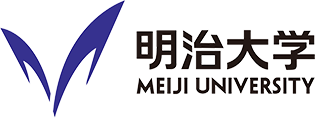A variety of learning provided at Meiji University in the summer vacation
Nov. 14, 2024
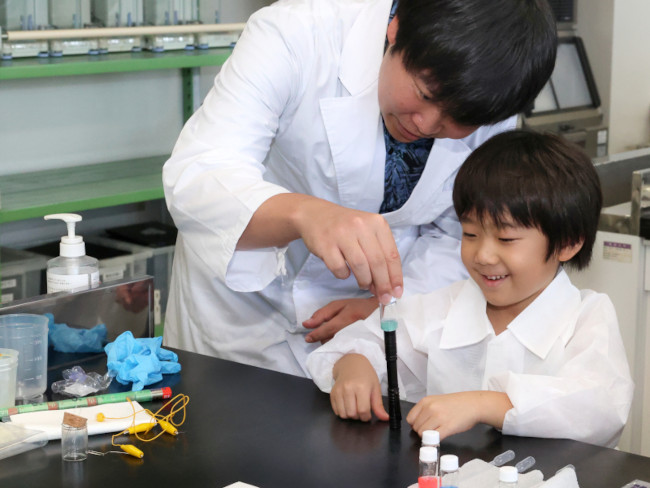
History of light (Department of Applied Chemistry)
All eight departments in the School of Science and Technology prepared different programs for each field, and a total of 10 programs, including “Solar powered radio!” by the Department of Electronics and Bioinformatics, “Mini robot running with a brush” by the Department of Mechanical Engineering Informatics, and “Let’s make a computer game with a Scratch program” by the Department of Computer Science, were provided.
In each program, participants could use their hands and feel the changes and movements of the objects, and children and students who participated in programs were enthusiastically working on them at every venue. In addition, university and graduate students supported the experiments and crafts to operate the programs while taking account of safety.
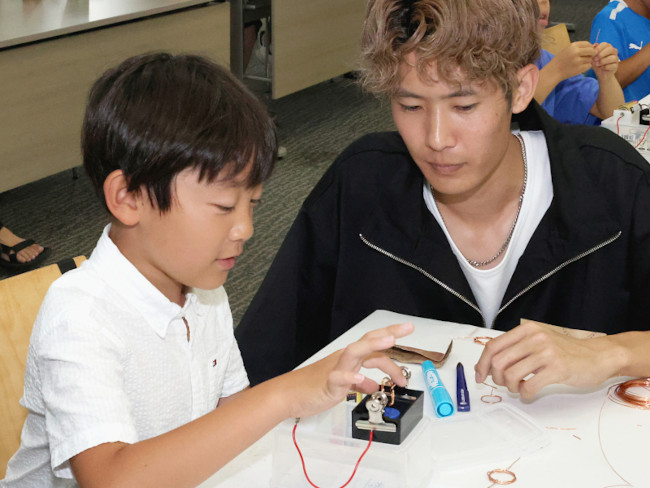
Let’s make a motor! (Department of Electronics and Bioinformatics)
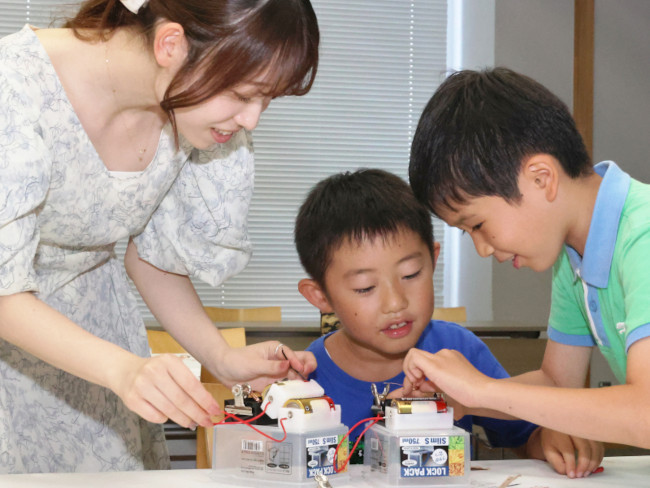
Let’s make a motor! (Department of Electronics and Bioinformatics)
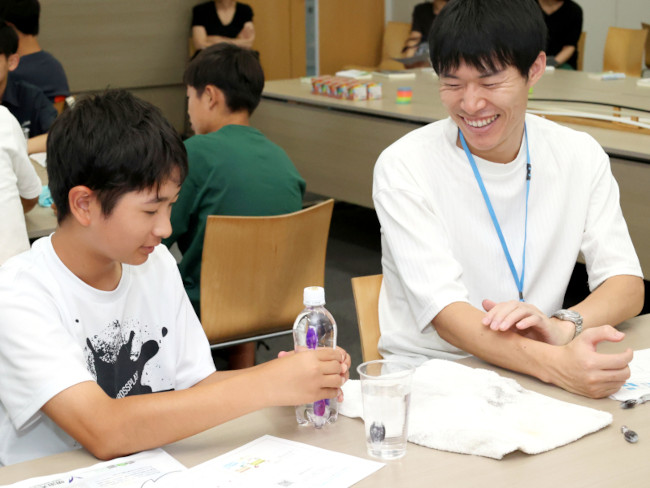
Become a person who controls air and water (Department of Mathematics)
Growing vegetables in a plant factory (Advanced Plant Factory Research Center)
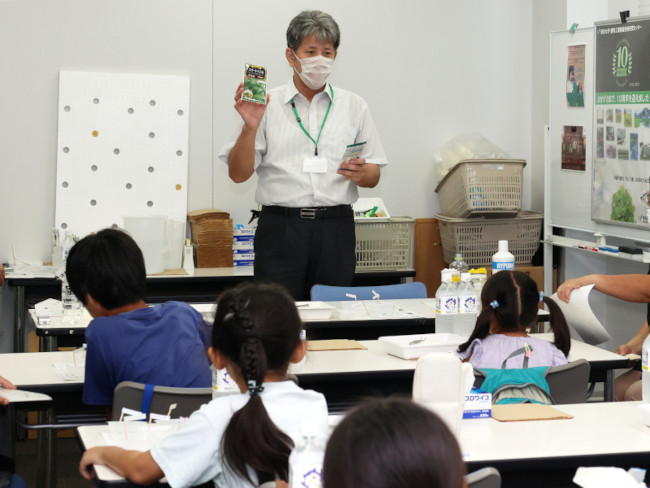
Lecture by Director IKEDA is very popular also with parents
The Advanced Plant Factory Research Center (Director: Professor IKEDA Takashi of the School of Agriculture) held “Growing vegetables in a plant factory – an experiential learning class” on August 1. This program is held every summer as part of activities to promote plant factories and to interact with the local community, and elementary school children can experience growing vegetables in the Factory’s clean room.
After taking a mini-lecture, 20 elementary school children experienced sowing, planting, harvesting, and working in a clean room. An elementary school child said, with a smile, “It was fun harvesting vegetables and putting them in the factory.” Parents who watched their children working in white coats said, “It was an interesting program not only for children but also for parents because we understood a new way of farming,” and, “I didn’t know students could study at such a good facility. I want my child to study at Meiji if possible.”
The Advanced Plant Factory Research Center will continue activities that contribute to society through research on the development and cultivation of functional vegetables and human resource development.
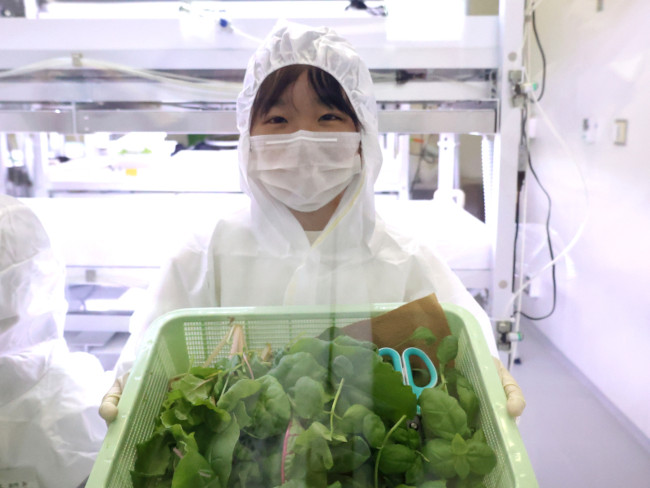
Children experienced harvesting work in the clean room
Summer vacation children ancient tumulus class (Meiji University Museum)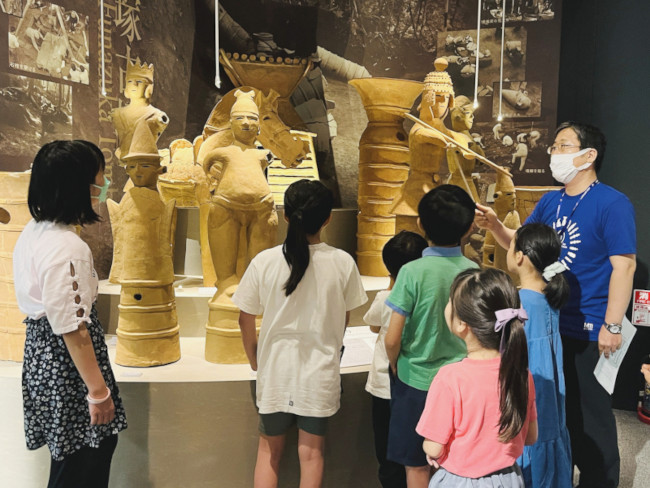
Looking at the displayed haniwa of the Tamari-funazuka Tumulus to learn about their features
Continuing from last year and the year before, the University Museum held a tumulus class for elementary school children and junior high school students on July 30. This year’s theme was haniwa tomb figurines placed on top of tumuli, and while observing the haniwa, which the Museum owns, of the Tamari-funazuka Tumulus and the Nishimachi Tumulus, they learned about how haniwa were made and the meaning behind their creation. A total of 24 people, consisting of 13 children and students from the 1st grade of elementary schools to the 3rd grade of junior high schools and 11 parents, participated in the program and observed a large horse-shaped haniwa, measuring as long as 1 m, up close and experienced holding a fragment of a house-shaped haniwa to feel its weight.
Children History Academy (University Museum’s student public relations ambassadors)
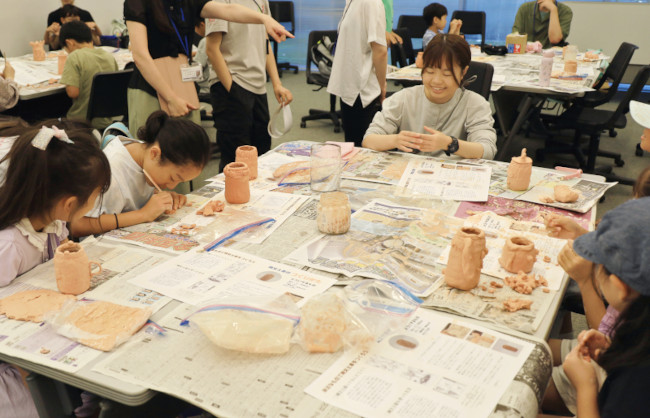
Many stylish works were created!
The event was held on August 9 by the University Museum’s student public relations ambassadors for elementary school children and junior high school students in Chiyoda City. This event, based on the basic agreement on cooperation and collaboration between universities in Chiyoda City and Chiyoda City, was publicized through the City’s bulletin boards and official LINE channel, and “Let’s make Jomon earthenware with familiar objects,” a class where participants created earthenware with empty bottles and paper clay, and “Let’s visit the Meiji University Museum with ambassadors,” a tour guided by the University’s students, were held. Both programs were busy and well attended, and after the event, participants expressed their satisfaction with the event and hope for the next one.